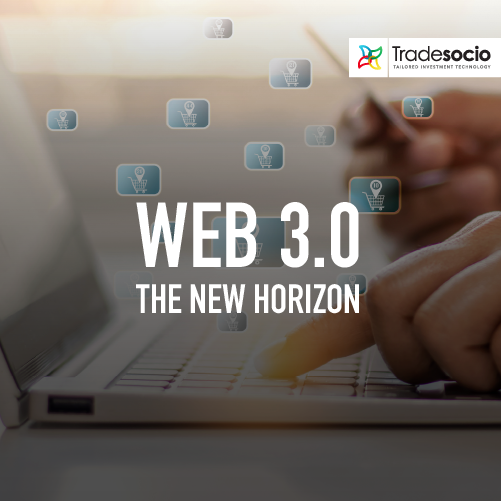Tradesocio has always been at the forefront of economic and financial progression that has seen the company explore new horizons, expand its operations to new frontiers. One of the most important progression in history is the advent of web3.0. To understand web3.0, we have to venture to the the beginning.
In the beginning, there was web1.0, also known as the internet. A collection of protocols that had a single purpose of serving data to users in as little time as possible. This data was restricted to text and low-res images. web1.0 was intended for academics & professionals.
In 2004, web2.0 was introduced, this time, the protocols expanded. As the speed of internet increased, it made possible for the users to directly interact on the internet. This meant that new business models were possible. If a service were to onboard a great amount of users, then the monetization of said user base would ensue.
Problems became prominent in web2.0, security was a concern, ownership of digital assets was tied to the service provider ,ie, if a person were to purchase “a song”, that song on the digital platform is still “technically” owned by the music service. If ,for some reason, that digital repository were to shut down, your ownership of that song would simply cease to exist.
The problem was centralization, service providers at the center of everything ,was only a problem if there was a solution. It was the status quo… until now.
Enter Web3.0, the latest effort in the evolution of the internet, where the main feature is “decentralization”.
In web3.0, your data is verifiable, trustless, self governing, permissionless & stateful.
This means that in web3.0, you own your “purchased digital goods”, whether the original seller is present or not.
Another critical feature in web3.0 is native built-in payments. Gone forever are payment services because payments are now a user-to-user protocol that is not dependent on a service provider, a bank, a financial institution or even a specific currency.
In web3, developers don’t build and deploy applications that run on a single server or store their data in a single database (usually hosted on and managed by a single cloud provider).
Instead, web3 applications either run on blockchains, decentralized networks of many peer to peer nodes (servers), or a combination of the two that forms a crypto economic protocols. These apps are often referred to as “dapps” (decentralized apps), and you will see that term used often in the web3 space.
One of the most interesting features to exist on the new web3.0 is known as “Decentralized autonomous organizations” or DAO for short.
DAOs are defined technically as smart contracts that automate decentralized decision making over resources whatever they may be.
All of this ties directly to the emergence of crypto economy, whereby, currency is no longer tied to a government or any financial body.
Crypto currency is the future and with web3.0, the entire financial landscape is about to evolve.

